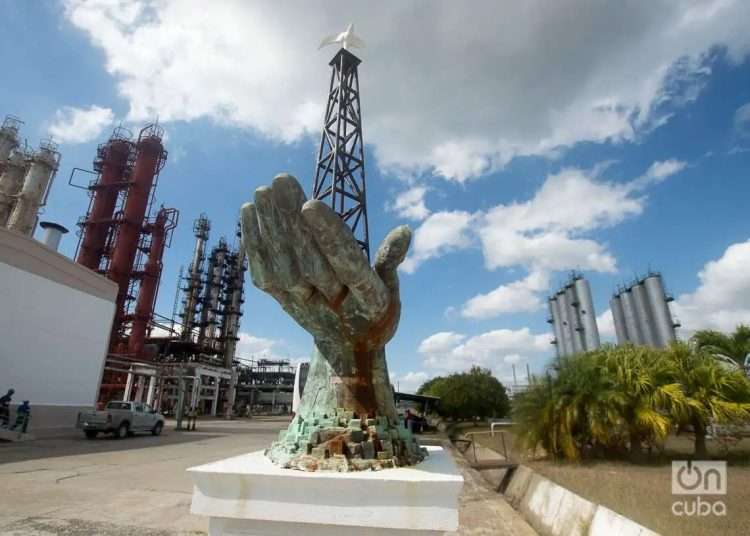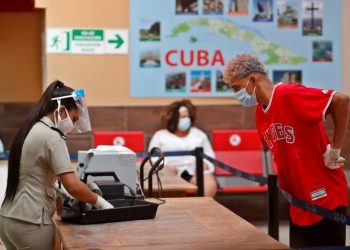|
Getting your Trinity Audio player ready...
|
Cuba and Russia are carrying out a growing number of joint projects as part of the “strategic alliance” that both countries have been strengthening in recent times.
Among the projects joining Havana and Moscow, one is in the field of astronomy and includes a network of work between Cuban specialists and Russian observatories to track objects such as meteors, asteroids and space debris.
This collaboration began in 2016 with links between the Russian Academy of Sciences, specifically between the Sternberg State Astronomical Institute of Moscow, the Institute of Applied Astronomy in Saint Petersburg and the Special Astrophysical Observatory, according to statements to Sputnik by Omar Pons Rodríguez, director of Technical Development of the Institute of Geophysics and Astronomy (IGA) of the Cuban Ministry of Science, Technology and Environment (CITMA).
Una de las líneas de la cooperación entre La Habana y Moscú en el campo de la astronomía resulta actualmente la optimización y garantía de funcionamiento del Observatorio Cubano-Ruso, así refirió a #Sputnik, Omar Pons Rodríguez, del Instituto de Geofísica y Astronomía. pic.twitter.com/5WlvwyPQQ3
— Sputnik Reporteros (@Sputnik_Report) July 7, 2023
One of the objectives of this collaboration is the construction of a localized space geodesy station, the first of its kind in the Caribbean. It includes the installation of a 13-meter diameter radio antenna for very long interferometry, the location of a laser satellite tracking system and a satellite positioning system receiver.
National Astronomical Observatory
As a materialization of this assistance, the Institute of Geophysics and Astronomy already inaugurated an Observatory in 2022. However, the work foresees the installation of two optical telescopes; the renewal of the Solar Radio Astronomical Station of Havana, created to monitor the activity of the sun and its influence on Earth.
The placement of all this technology is included in what Pons Rodríguez describes as the “great dream of the constitution of the National Astronomical Observatory” in Valle de Picadura, Mayabeque, a “priority within bilateral collaboration.”
Joint research
IGA specialist Francisco González Veitía told Sputnik that the research carried out at the Cuban-Russian Observatory is of great importance to both countries.
This collaboration’s study topics include spotted variable stars and other explorations around near-Earth asteroids.
González Veitía recalled that since the 1960s the extinct Soviet Union had collaborated with the island in the field of astronomy.
“There was relevant cooperation in the field of radio astronomy. Even the radio telescopes that operate today at the Havana Radio Astronomical Station were placed at that time and that institution functioned for many years thanks to Soviet support. This is why the current ties with Moscow are not alien to us, we are friends and some of us already know each other,” commented the expert.
He also indicated that the financing of the Eurasian country was essential in the execution of these projects and the acquisition of costly systems, since Cuba is going through a severe economic crisis, exacerbated by the effects of the pandemic and the United States sanctions.
Rapprochement in 2023
Cuba and Russia have boosted their bilateral relations in recent years. Currently, the Eurasian nation is one of Cuba’s top ten trading partners, and both governments define their partnership as “strategic.”
In fact, last week the Russian ambassador in Havana, Víctor Koronelli, revealed that the supply of new cars, the renewal of the railway network and the modernization of the largest oil refinery in Cuba are some of the bilateral projects considered between the island and Russia at the moment.
The diplomat referred to the participation in the Cienfuegos refinery, located about 250 km southeast of Havana. It is the largest in the country and is owned by the state company Cupet.
“There are currently discussions about the possible reconstruction, in whole or in part, I don’t know, but the issue is also being discussed,” Koronelli told the TASS agency.
According to the diplomat, Russian companies also supply equipment for metallurgical programs, as well as for thermal power plants.
Ladas, railways and sugar
Russian car manufacturers are also interested in delivering cars to Cuba, and the respective supplies are being negotiated. “Our equipment here is in demand since people remember it,” said Koronelli, who mentioned such makes as Lada Vesta, Granta, Niva, as well as Kamaz, among the popular models in the country.
Along with this, and in terms of transportation, Russian Railways is negotiating the reconstruction of a section of the Cuban railways, according to the diplomat, who added that Sinara-Transport Machines can supply rolling stock to the Cuban railways.
RZD International, a subsidiary of Russian Railways, and the Union of Railways of Cuba signed a contractual agreement on the restoration and modernization project of the republic’s railway infrastructure in 2017.
Similarly, Russia can participate in the reconstruction of sugarcane plantations and processing sugar mills in Cuba, Koronelli told TASS, adding that two Russian agricultural companies are discussing respective projects in Cuba.
“Now our companies plan to come here, including to the sugar sector. So far everything is in the discussion stage. However, the issue concerns two large agricultural holdings interested in working here in the reconstruction of sugarcane plantations and processing mills,” the diplomat concluded.











Good to see this.